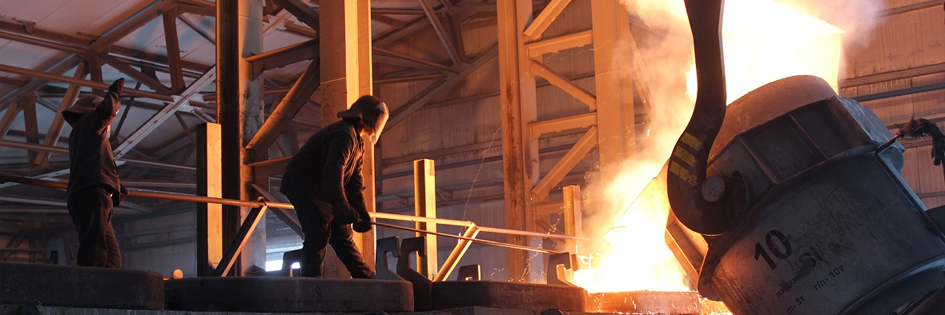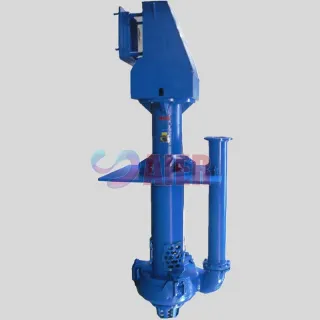Vertical Slurry Pump
A vertical slurry pump is specifically designed for handling abrasive, high-density, and corrosive slurries in challenging industrial environments. At Aier Machinery Hebei Co., Ltd., we are committed to producing advanced pumping solutions, including slurry pumps, gravel pumps, dredge pumps, sewage pumps, and clean water pumps. Our expertise spans decades in engineering high-performance pumps that deliver reliability, efficiency, and long service life for diverse industries such as mining, metallurgy, coal processing, chemical production, and wastewater management.
Our vertical slurry pumps are engineered to provide robust performance in situations where space is limited or suction conditions are difficult. They are particularly suitable for deep sump applications, tailings ponds, chemical tanks, and other industrial operations requiring reliable vertical pumping of abrasive slurries. The pump’s vertical configuration allows for direct installation into sumps or pits, eliminating the need for priming and reducing the risk of cavitation.
Constructed with wear-resistant materials such as high-chrome alloys, stainless steel, and other durable metals, our industrial slurry pumps are built to withstand high abrasion and corrosion. Replaceable impellers and liners make maintenance straightforward, minimizing downtime and operational costs. The vertical design also ensures a compact footprint and stable operation, even under high-flow, high-solids conditions.
Vertical Slurry Pumps in Chemical and Metallurgical Industries
Handling abrasive, corrosive, and high-temperature slurries in chemical and metallurgical industries requires reliable and robust equipment. A vertical slurry pump for chemical industry is specifically designed to meet these demanding conditions, offering superior wear resistance, corrosion protection, and long operational life. Unlike traditional horizontal pumps, vertical pumps feature a submerged impeller and a vertical shaft, eliminating the need for shaft seals in many cases and reducing the risk of leaks.
In chemical processing plants, slurries often contain strong acids, alkalis, or reactive chemicals that can rapidly corrode metal components. A corrosion resistant vertical pump addresses this challenge by using high-quality alloys, stainless steel, or lined materials for critical wear parts. The vertical design allows the pump to handle large volumes of slurry while maintaining chemical integrity, ensuring safe and reliable operation for continuous processes. The absence of mechanical seals also minimizes maintenance requirements and potential leakage hazards, which is particularly important in handling hazardous fluids.
In metallurgical industries, slurries may contain molten slags, heavy metal ores, or other abrasive particles. A metal industry vertical slurry pump is engineered with wear-resistant liners, heavy-duty impellers, and reinforced shafts to handle extreme abrasion and high-density slurry. The vertical configuration ensures uniform slurry flow into the impeller, minimizing vortex formation and maintaining consistent hydraulic efficiency. Additionally, modular construction enables easy replacement of worn parts without dismantling the entire pump, reducing downtime and maintenance costs.
Customization is another key advantage. Manufacturers can tailor vertical slurry pumps for chemical and metallurgical applications to meet specific flow rates, head requirements, temperature ranges, and slurry concentrations. By choosing the right materials and design features, operators can optimize energy efficiency while protecting the pump against premature wear and corrosion.
Overall, the use of vertical slurry pumps in chemical and metallurgical industries enhances operational reliability, reduces maintenance costs, and provides long-term performance in challenging environments. These pumps are indispensable for applications that demand both chemical resistance and abrasion tolerance, making them a preferred solution for modern industrial slurry handling.
Selecting the Right Vertical Slurry Pump for Your Project
Choosing the correct vertical slurry pump is critical for ensuring operational efficiency, reducing maintenance costs, and achieving long-term reliability. Proper vertical slurry pump selection requires careful consideration of multiple factors, including flow rate, head, slurry density, particle size, temperature, and chemical composition. Each parameter directly impacts pump performance and service life.
The first step is to determine the required flow rate and discharge head. Selecting a pump that matches these parameters ensures that the system operates near its best efficiency point, reducing energy consumption and wear. Oversized or undersized pumps can lead to cavitation, vibration, or accelerated erosion of internal components. Vertical pump size also affects suction performance and the ability to handle large solids; therefore, it must be carefully matched to the application.
Next, consider slurry characteristics such as particle size, concentration, and abrasiveness. Slurries with coarse or dense particles require pumps with reinforced impellers, thicker liners, and wear-resistant materials. For corrosive liquids, a vertical slurry pump for chemical industry with corrosion-resistant alloys or lined surfaces is essential to prevent chemical attack and extend pump life. Manufacturers can provide guidance on material selection based on operational conditions, ensuring the pump meets both abrasion and chemical requirements.
Operational temperature and viscosity should also be factored into vertical slurry pump selection. High-temperature applications may require special alloys or cooling systems to prevent deformation or wear. Viscous slurries may necessitate pumps with specific impeller designs to maintain proper flow and prevent clogging.
Finally, consider maintenance accessibility and availability of slurry pump spare parts. Pumps designed for easy inspection and modular component replacement minimize downtime and reduce long-term operating costs. By carefully evaluating these parameters and consulting with experienced manufacturers, companies can select the best vertical slurry pump for their specific project requirements, ensuring reliable and efficient slurry handling over time.
Maintenance and Troubleshooting Tips for Vertical Slurry Pumps
Proper vertical slurry pump maintenance is essential to ensure long-term performance, prevent unexpected downtime, and reduce repair costs. Despite their robust design, vertical pumps are subject to wear, corrosion, and mechanical stress due to abrasive slurries and harsh operating conditions. Regular inspections, preventive maintenance, and timely replacement of slurry pump spare parts are key to maximizing pump life.
One critical maintenance task is monitoring wear on impellers, liners, and shafts. High-velocity slurry can erode these components over time, leading to reduced efficiency and potential failure. Using genuine vertical pump spare parts ensures that replacements fit precisely and maintain hydraulic performance. Routine lubrication and bearing checks are also important, as worn or improperly lubricated bearings can cause vibration, noise, and premature failure.
Seals and gaskets must be inspected frequently, especially in pumps handling corrosive or abrasive fluids. Even minor leaks can lead to serious damage if left unaddressed. Many corrosion resistant vertical pumps are designed with minimal sealing requirements, but periodic inspection is still recommended.
Vertical pump troubleshooting often involves diagnosing vibration, noise, reduced flow, or pressure fluctuations. Common causes include misalignment, clogged suction lines, cavitation, or worn impellers. Operators should follow standard troubleshooting procedures, such as checking pump alignment, clearing obstructions, monitoring slurry concentration, and verifying operating conditions against design specifications.
Preventive measures also include flushing the pump after use, avoiding dry running, and maintaining proper slurry composition. Following manufacturer-recommended maintenance schedules and using high-quality slurry pump spare parts significantly improves reliability.
In summary, effective vertical slurry pump maintenance and troubleshooting practices ensure consistent performance, minimize downtime, and extend service life. By inspecting wear components, monitoring bearings and seals, and addressing operational issues promptly, industrial operators can optimize pump efficiency and achieve safe, reliable slurry handling in demanding chemical, metallurgical, and mining applications.



